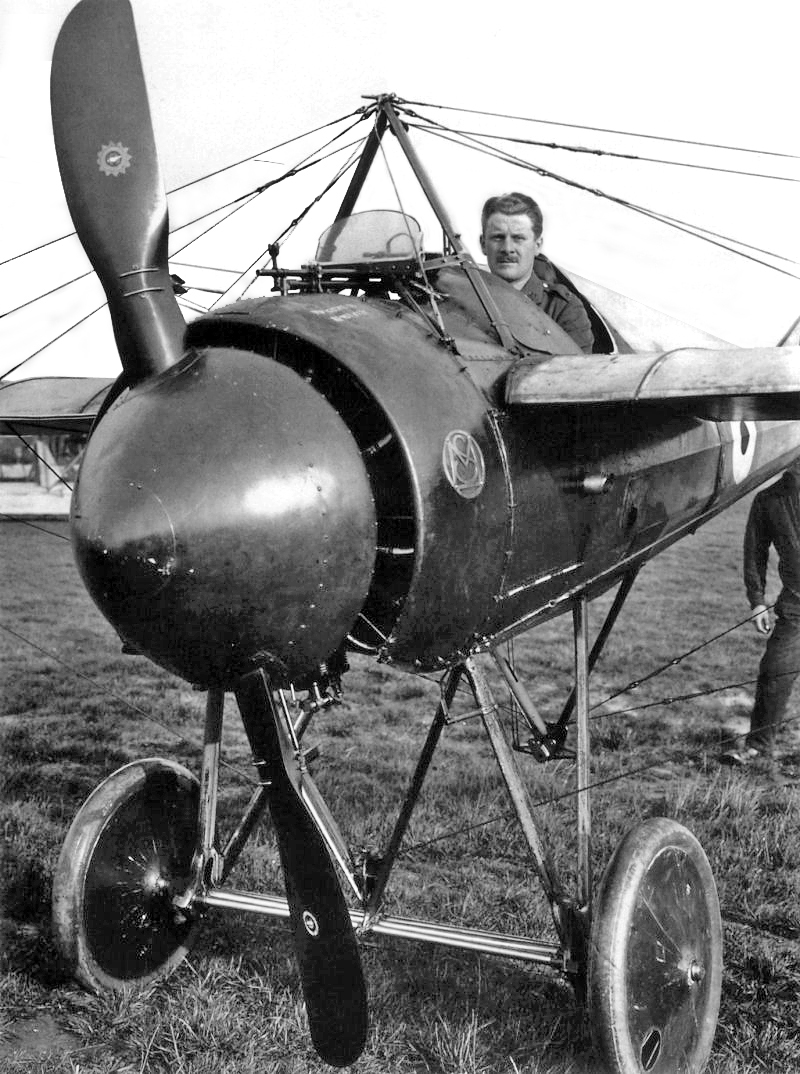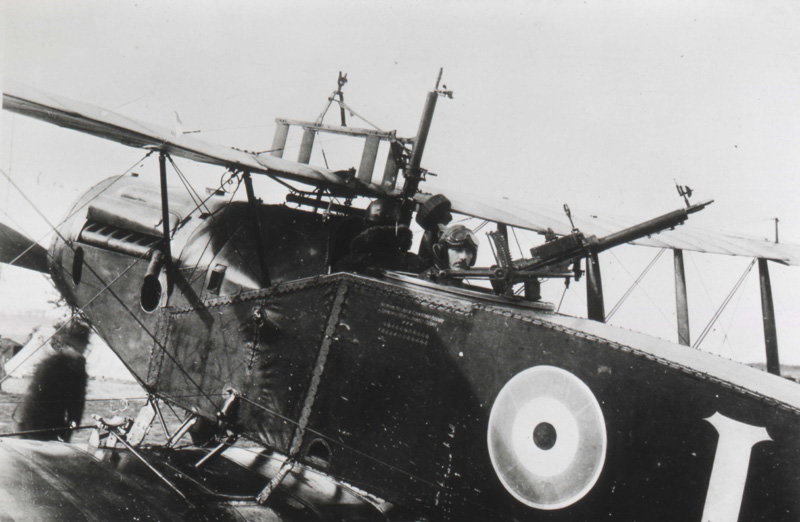|
Harry George Smart
Harry George Smart, (28 June 1891 – 28 June 1963) is best known for having been the commander of RAF Habbaniya during the first part of the Anglo-Iraqi War. Smart was an officer in the British Army, the Royal Flying Corps and the Royal Air Force. He served during the First World War, during the interwar period, and during the Second World War. Biography In 1891, Harry George " Reggie" SmartLyman, p. 19 was born in Newmarket, Suffolk, in the United Kingdom. Smart attended Framlingham College between 1905 and 1907 and joined the British Army sometime thereafter. He served as a Sapper with the Royal Engineers.Air of Authority, Biographies, Air Vice-Marshal H G Smart On 30 November 1915, Smart received a commission with the Royal Flying Corps. From 29 April 1916, he was a Morane Bullet pilot with No. 60 Squadron on the Western Front. On 23 Jul 1917, Smart was made a squadron Flight Commander and, by 30 Apr 1918, he was Officer Commanding of a squadron. On 14 Jan 1919, S ... [...More Info...] [...Related Items...] OR: [Wikipedia] [Google] [Baidu] |
List Of Military Figures By Nickname
This is a list of military figures by nickname. 0-9 *"31-Knot Burke" – Arleigh Burke, U.S. Navy destroyer commander (for being unable to meet his habitual maximum speed during one operation due to limited recent maintenance) A *"ABC" – Andrew Browne Cunningham, Second World War British admiral *"Acey" – Albert C. Burrows, World War II U.S. Navy submarine commander *"Achmed" – Erich Bey, German '' Kriegsmarine'' admiral *"Allegheny Johnson" or "Alleghany Johnson" – Edward Johnson, Confederate Army general *"Assi" – Hans Hahn, German fighter pilot during World War II *"The Auk" – Claude Auchinleck, British Indian Army field marshal *"Autie" – George Custer, American army officer B *"Babe" – ** John H. Brown, World War II U.S. Navy submarine commander **Edward Heffron, American World War II paratrooper ** Roderick Learoyd VC, World War II RAF bomber pilot *"Bad Hand" – Ranald S. Mackenzie, U.S. Army general in the American Civil War and Indian Wars *"Bad ... [...More Info...] [...Related Items...] OR: [Wikipedia] [Google] [Baidu] |
Royal Flying Corps
"Through Adversity to the Stars" , colors = , colours_label = , march = , mascot = , anniversaries = , decorations = , battle_honours = , battles_label = Wars , battles = First World War , disbanded = merged with RNAS to become Royal Air Force (RAF), 1918 , current_commander = , current_commander_label = , ceremonial_chief = , ceremonial_chief_label = , colonel_of_the_regiment = , colonel_of_the_regiment_label = , notable_commanders = Sir David HendersonHugh Trenchard , identification_symbol = , identification_symbol_label = Roundel , identification_symbol_2 = , identification_symbol_2_label = Flag , aircraft_attack = , aircraft_bomber = , aircraft_el ... [...More Info...] [...Related Items...] OR: [Wikipedia] [Google] [Baidu] |
Felton Holt
Air Vice Marshal Felton Vesey Holt, (23 February 1886 – 23 April 1931) was a squadron and wing commander in the Royal Flying Corps who became a brigadier general in the newly established Royal Air Force (RAF) just before the end of the First World War. During the inter-war years Holt remained in the RAF, serving in several staff appointments before becoming Air Officer Commanding Fighting Area. Holt was killed in a flying accident not long after taking up his final appointment. He was flying in a de Havilland DH.60M Moth from RAF Tangmere to take him back to RAF Uxbridge when it crashed at Seahurst Park near Chichester, following a collision with an Armstrong Whitworth Siskin The Armstrong Whitworth Siskin was a biplane single-seat fighter aircraft developed and produced by the British aircraft manufacturer Armstrong Whitworth Aircraft. It was also the first all-metal fighter to be operated by the Royal Air Force (RA .... Holt managed to get out of the aircraft, but his ... [...More Info...] [...Related Items...] OR: [Wikipedia] [Google] [Baidu] |
Commandant
Commandant ( or ) is a title often given to the officer in charge of a military (or other uniformed service) training establishment or academy. This usage is common in English-speaking nations. In some countries it may be a military or police rank. It is also often used to refer to the commander of a military prison or prison camp (including concentration camps and prisoner of war camps). Bangladesh In Bangladesh Armed Forces commandant is not any rank. It is an appointment. The commandant serves as the head of any military training institutes or unit. Canada ''Commandant'' is the normal Canadian French-language term for the commanding officer of a mid-sized unit, such as a regiment or battalion, within the Canadian Forces. In smaller units, the commander is usually known in French as the ''officier commandant''. Conversely, in Canadian English, the word commandant is used exclusively for the commanding officers of military units that provide oversight and/or services to a res ... [...More Info...] [...Related Items...] OR: [Wikipedia] [Google] [Baidu] |
Flight Instructor
A flight instructor is a person who teaches others to operate aircraft. Specific privileges granted to holders of a flight instructor qualification vary from country to country, but very generally, a flight instructor serves to enhance or evaluate the knowledge and skill level of an aviator in pursuit of a higher pilot's license, certificate or rating. United States Privileges A person who holds a flight instructor certificate (called a "certificated flight instructor" or CFI) is authorized to give training and endorsements required for and relating to: *a student, private, commercial or other pilot certificate; *the three hours of training with reference only to instruments in preparation for a private pilot certificate, note that this does not need to be a CFII. *an instrument rating, only if the CFI has an instrument instructor rating (CFII); This cannot be given by a "safety pilot". A safety pilot can only be used to help maintain instrument proficiency with an instrument- ... [...More Info...] [...Related Items...] OR: [Wikipedia] [Google] [Baidu] |
Squadron Leader
Squadron leader (Sqn Ldr in the RAF ; SQNLDR in the RAAF and RNZAF; formerly sometimes S/L in all services) is a commissioned rank in the Royal Air Force and the air forces of many countries which have historical British influence. It is also sometimes used as the English translation of an equivalent rank in countries which have a non-English air force-specific rank structure. An air force squadron leader ranks above flight lieutenant and immediately below wing commander and it is the most junior of the senior officer ranks. The air force rank of squadron leader has a NATO ranking code of OF-3, equivalent to a lieutenant-commander in the Royal Navy or a major in the British Army or the Royal Marines. The equivalent rank in the Women's Auxiliary Air Force, Women's Royal Air Force (until 1968) and Princess Mary's Royal Air Force Nursing Service (until 1980) was "squadron officer". Squadron leader has also been used as a cavalry command appointment (UK) and rank (France) since ... [...More Info...] [...Related Items...] OR: [Wikipedia] [Google] [Baidu] |
Bristol F2B
The Bristol F.2 Fighter is a British First World War two-seat biplane fighter and reconnaissance aircraft developed by Frank Barnwell at the Bristol Aeroplane Company. It is often simply called the Bristol Fighter, ''"Brisfit"'' or ''"Biff"''. Although the type was intended initially as a replacement for the pre-war Royal Aircraft Factory B.E.2c reconnaissance aircraft, the new Rolls-Royce Falcon V12 engine gave it the performance of a fighter. Despite a disastrous start to its career, the definitive F.2B version proved to be a manoeuvrable aircraft that was able to hold its own against single-seat fighters while its robust design ensured that it remained in military service into the early 1930s. Some surplus aircraft were registered for civilian use, and versions with passenger cabins were converted. Development Origins In the Autumn of 1915, the Royal Flying Corps (RFC) needed a new aerial reconnaissance and artillery spotting aircraft to replace the pre-war Royal ... [...More Info...] [...Related Items...] OR: [Wikipedia] [Google] [Baidu] |




